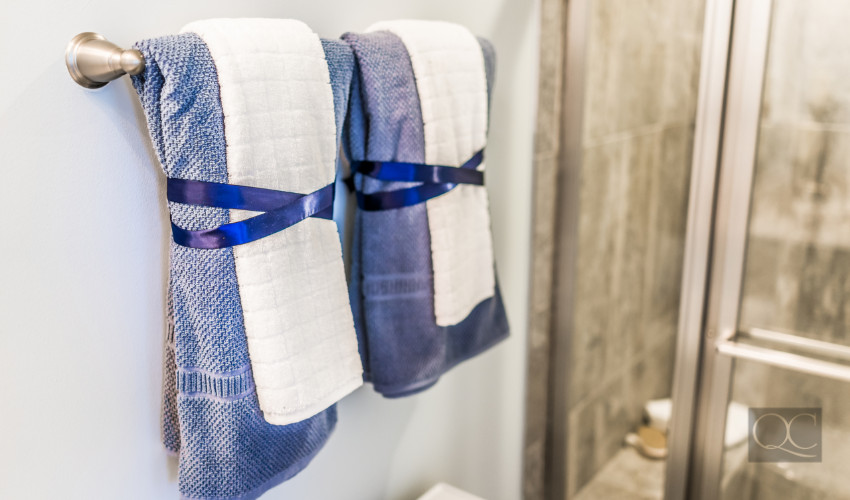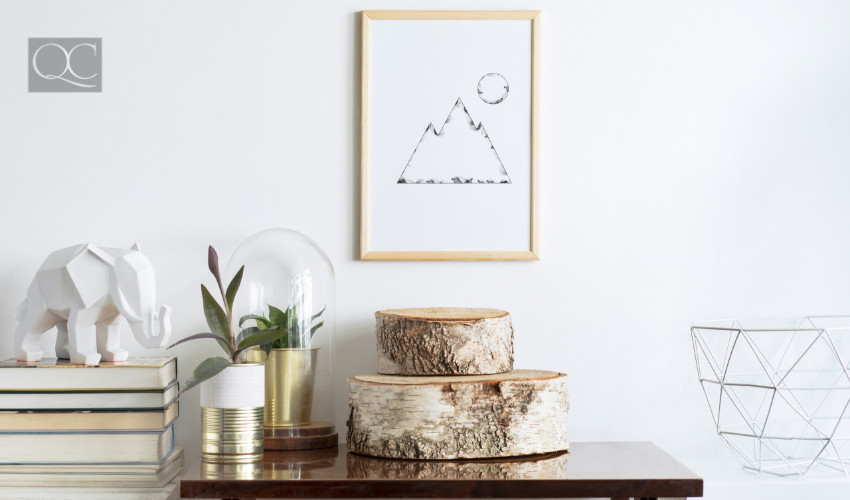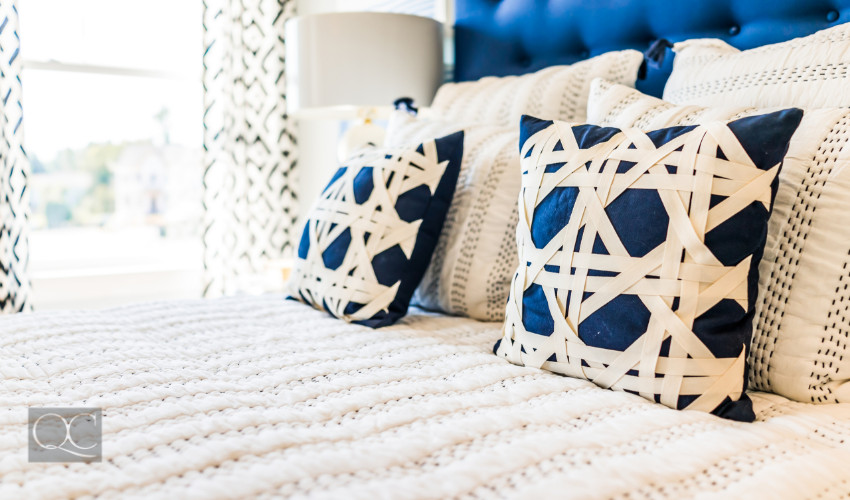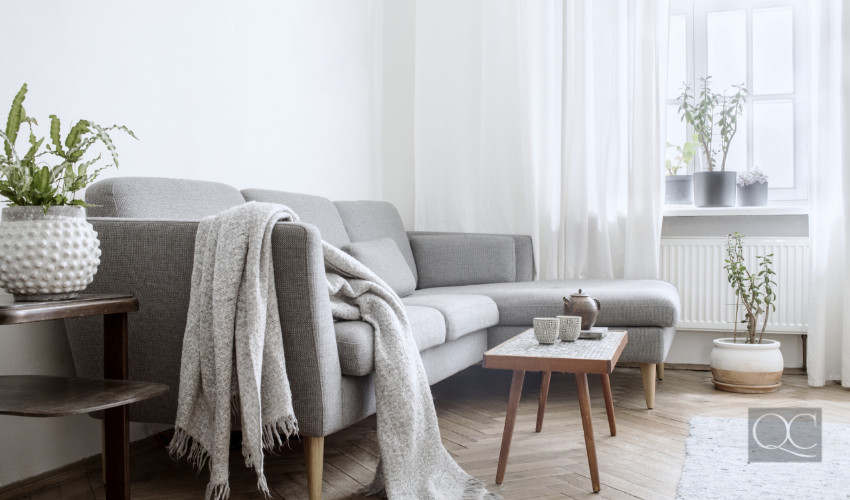The design industry is dynamic and competitive, which makes a career as a home design professional so exciting! When it comes to choosing your specific niche, interior decorating and home staging are two of the most common career paths. People often wonder what the differences are between these two. Specifically what each role entails, which skills are needed by home stagers that interior decorators don’t necessarily need, and how the training is different.
Read on for the key differences in these design careers and find out which career path is right for you in the décor industry!
 Here are a few examples of how home stagers carefully improve their clients’ homes in order to entice buyers:
Here are a few examples of how home stagers carefully improve their clients’ homes in order to entice buyers:
 Interior decorators are hired by clients who may be overwhelmed with the idea of completely overhauling their home, or even specific rooms within their home. These clients depend on the expertise of a trained home decorating professional to help them. As an interior decorator, here are some examples of how you’ll transform your clients’ homes:
Interior decorators are hired by clients who may be overwhelmed with the idea of completely overhauling their home, or even specific rooms within their home. These clients depend on the expertise of a trained home decorating professional to help them. As an interior decorator, here are some examples of how you’ll transform your clients’ homes:
 Interior decorator courses, alternatively, teach fundamental design elements such as basic and modern design materials and how to use them within the home. Interior decorators also learn how to work with textiles, how to recreate certain styles based on a client’s preferences, and how to design specific rooms and spaces. This area of home design training prepares aspiring decorators to work with different clients and use their trained eye to develop solutions that are safe and functional.
In a nutshell: interior decorators allow a client’s unique personality to be reflected through their home décor, while home stagers create an inviting interior and exterior that entices buyers to purchase the property.
Interior decorator courses, alternatively, teach fundamental design elements such as basic and modern design materials and how to use them within the home. Interior decorators also learn how to work with textiles, how to recreate certain styles based on a client’s preferences, and how to design specific rooms and spaces. This area of home design training prepares aspiring decorators to work with different clients and use their trained eye to develop solutions that are safe and functional.
In a nutshell: interior decorators allow a client’s unique personality to be reflected through their home décor, while home stagers create an inviting interior and exterior that entices buyers to purchase the property.

Home Staging
As a branch of the design industry, home staging is a process that highlights a home’s best features and helps clients sell quickly (and get the best market price). As a home stager, you use your interior decorating expertise to dress a home for sale. Your help is invaluable to clients who want their properties to appear large, clean and inviting—inside and out. Here are a few examples of how home stagers carefully improve their clients’ homes in order to entice buyers:
Here are a few examples of how home stagers carefully improve their clients’ homes in order to entice buyers:
- Banishing clutter from living rooms and bedrooms by encouraging clients to plan a garage sale and decide which items have outlived their use.
- Displaying a client’s unique decorative items in new ways, through a process called re-design. For example, home stagers could arrange home accessories in a specific order that enhances the room.
- Removing personal items from the home, such as family photos, to create a more generic space that any buyer could imagine living in.
- Evaluating which repairs need to be made to the home’s exterior in order to improve curb appeal.
Interior Decorating
Perhaps the most well-known branch of the home design industry, interior decorating deals with the look and feel of a room, transforming the space through the use of accessories, window treatments, artwork, and more. Interior decorators work closely with their clients to select color schemes, place furniture, and accessorize in ways that reflect the client’s unique taste and personality. Interior decorators are hired by clients who may be overwhelmed with the idea of completely overhauling their home, or even specific rooms within their home. These clients depend on the expertise of a trained home decorating professional to help them. As an interior decorator, here are some examples of how you’ll transform your clients’ homes:
Interior decorators are hired by clients who may be overwhelmed with the idea of completely overhauling their home, or even specific rooms within their home. These clients depend on the expertise of a trained home decorating professional to help them. As an interior decorator, here are some examples of how you’ll transform your clients’ homes:
- Using a checklist to assess a space in order to determine what is missing, or what could be improved.
- Reproducing a particular style within your client’s home, such as an Art Deco or a Southwestern design style.
- Creating a specific mood through the use of lighting fixtures, according to what your client has requested.
- Helping your client make the most of small spaces, such as bathrooms and kitchens. This includes replacing sinks or appliances and adding color.
Training
While there are similarities in training for both home stagers and interior decorators, such as focal points, color theory, and floorplans, there are also many differences. They mainly vary in the focus of each role—for example, home stagers are hired by clients who own homes that they wish to sell. Therefore, the training that home stagers receive in a home staging course is centered on de-cluttering, de-personalizing, redesign, creating curb appeal, and the basics of real estate. This training prepares a home stager to use different processes to help clients successfully sell their homes for the best price possible. Home stager training also provides helpful tools to deal with different client personalities and real estate agents. Interior decorator courses, alternatively, teach fundamental design elements such as basic and modern design materials and how to use them within the home. Interior decorators also learn how to work with textiles, how to recreate certain styles based on a client’s preferences, and how to design specific rooms and spaces. This area of home design training prepares aspiring decorators to work with different clients and use their trained eye to develop solutions that are safe and functional.
In a nutshell: interior decorators allow a client’s unique personality to be reflected through their home décor, while home stagers create an inviting interior and exterior that entices buyers to purchase the property.
Interior decorator courses, alternatively, teach fundamental design elements such as basic and modern design materials and how to use them within the home. Interior decorators also learn how to work with textiles, how to recreate certain styles based on a client’s preferences, and how to design specific rooms and spaces. This area of home design training prepares aspiring decorators to work with different clients and use their trained eye to develop solutions that are safe and functional.
In a nutshell: interior decorators allow a client’s unique personality to be reflected through their home décor, while home stagers create an inviting interior and exterior that entices buyers to purchase the property.
Certification
In most places, home design is an unregulated industry. This means that you are not required to become formally licensed in order to work as an interior decorator or home stager. However, you’ll find that clients are hesitant to work with you if you have not completed professional design training. If you decide to enroll in a training program to become an interior decorator or certified home stager, you can choose whether you’d like to study from home or at a physical campus. There are many options available when it comes to your home design education, and most programs take about a year to complete. In terms of salary, there are differences as well. Depending on how much a home stager charges for their services, an average salary of a stager is $47,000, with earning potential of up to $70,000. The average salary of an interior decorator is $38,000, but similar to home staging, this is dependent on how much you charge for your services. Interior decorators have the potential to earn more than $100,000.
